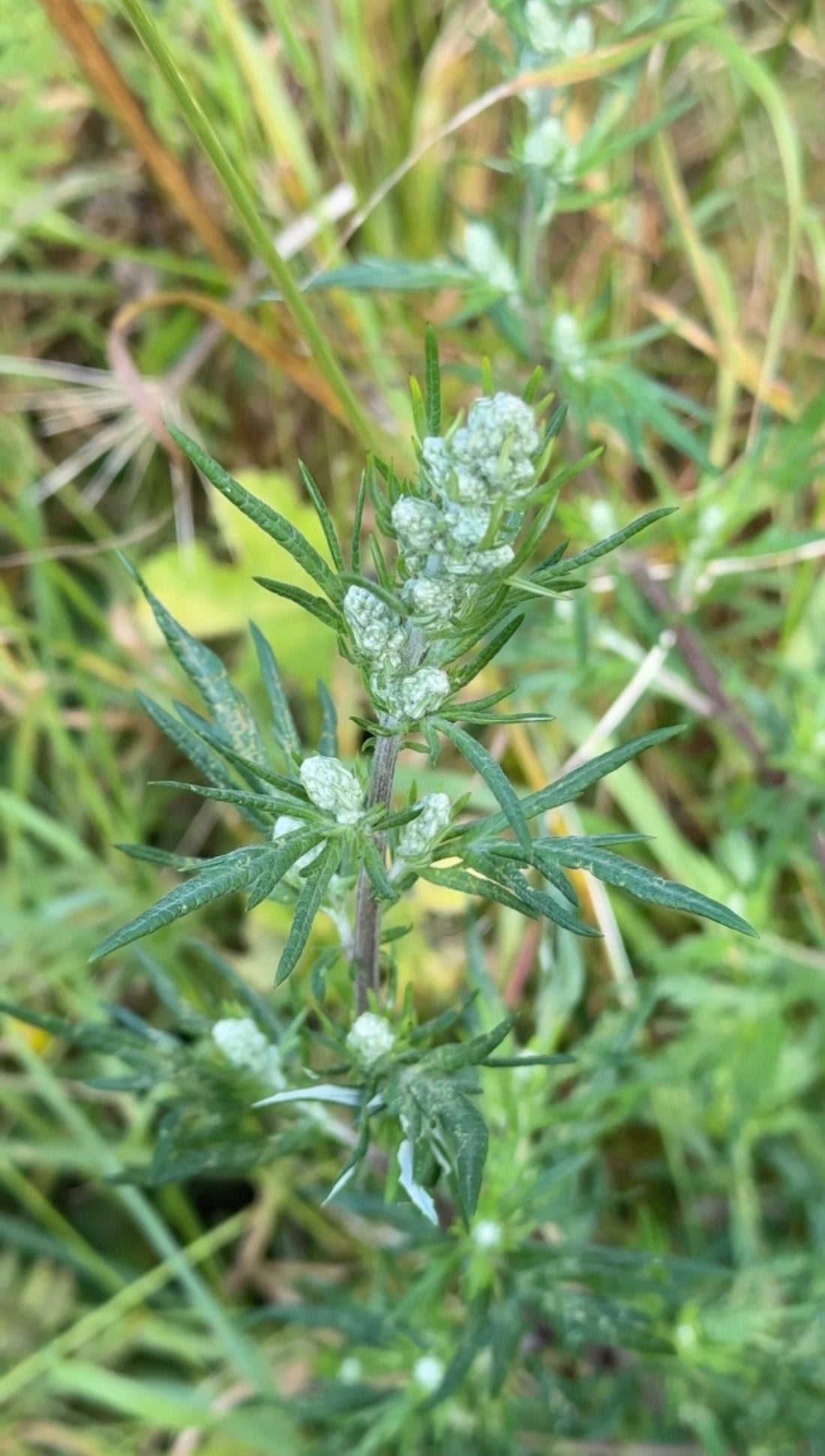
Mugwort: An Ancient Plant with Modern Potential
Share
If there’s one plant that continues to surprise even the most experienced herbalists, it’s Artemisia vulgaris – commonly known as mugwort.
Often overlooked today as a wild weed, mugwort once held a place of honour in the apothecaries, kitchens, and rituals of Europe, Asia, and beyond. Used by midwives, herbalists, mystics, and travellers alike, this deeply aromatic herb has long been considered both a protector and a guide.
And while its folklore is fascinating, what’s even more exciting is the way modern science is starting to validate its medicinal potential – including early research into its anticancer activity.
A Herb Rooted in Ritual and Story
Mugwort’s reputation reaches far beyond the teacup.
In ancient Europe, it was known as the “traveller’s herb” – believed to offer strength, protection, and relief from fatigue. Roman soldiers were said to place it in their sandals to prevent exhaustion during long marches. In many cultures, it was burned to ward off evil spirits, used in dreamwork, and planted at doorways to offer psychic protection.
In traditional Chinese medicine, mugwort (as part of the Artemisia family) is used in moxibustion – a technique where dried mugwort is burned near acupuncture points to stimulate circulation and energy flow.
In European folk healing, mugwort was also revered as a "witch’s herb", linked to the moon, feminine cycles, and visionary states. Women would use it to ease menstrual pain, encourage delayed periods, and connect more deeply with their intuition. Mugwort tea was often drunk before rituals, divination practices, or even long walks into the forest.
It was a herb of thresholds – bridging the physical and the spiritual, the seen and the unseen.
From Myth to Molecules: What Modern Science Is Finding
While mugwort’s folkloric uses are fascinating in themselves, it’s the modern research that adds a new layer of intrigue.
Recent studies have shown that extracts from Artemisia vulgaris may:
-
Induce apoptosis (programmed cell death) in cancer cells
-
Suppress tumour growth in colon, lung, and brain cancer models
-
Interfere with cancer-related signalling pathways
-
Reduce inflammation and oxidative stress
These effects are believed to be linked to compounds like flavonoids, artemisinin derivatives, chlorogenic acid, and volatile oils.
Of course, this research is still in its early stages – primarily based on cell studies – but it opens the door to seeing this plant not just as a ritual ally, but a possible player in the future of integrative medicine.
Want to Truly Get to Know This Plant?
Inside Herbedies Circle, my private platform for plant lovers and wellness seekers, you’ll find a complete mini-lesson on mugwort, where we explore:
-
How to use it in teas, tinctures, oils and dreamwork
-
How to work with it safely (and when to avoid it)
-
Its energetic profile – warming, moving, intuitive
-
A detailed summary of the latest anticancer studies
-
Ritual and folk traditions you can respectfully adapt today
This is where herbal knowledge meets modern wellness – and where you can learn to work with plants not just for symptoms, but for deeper balance and connection.
Ready to Explore Mugwort Differently?
If you’re curious to go beyond surface-level herb lists and truly build a relationship with the plants you use, Herbedies Circle is the place to begin.
You’ll gain access to lessons, herbal recipes, monthly plant profiles and a growing library of practical, grounded, plant-based wisdom.
👉 Click here to join Herbedies Circle and unlock the mugwort mini-lesson.
Let’s remember what our ancestors knew – and explore what science is still discovering. One plant at a time. 🌿
